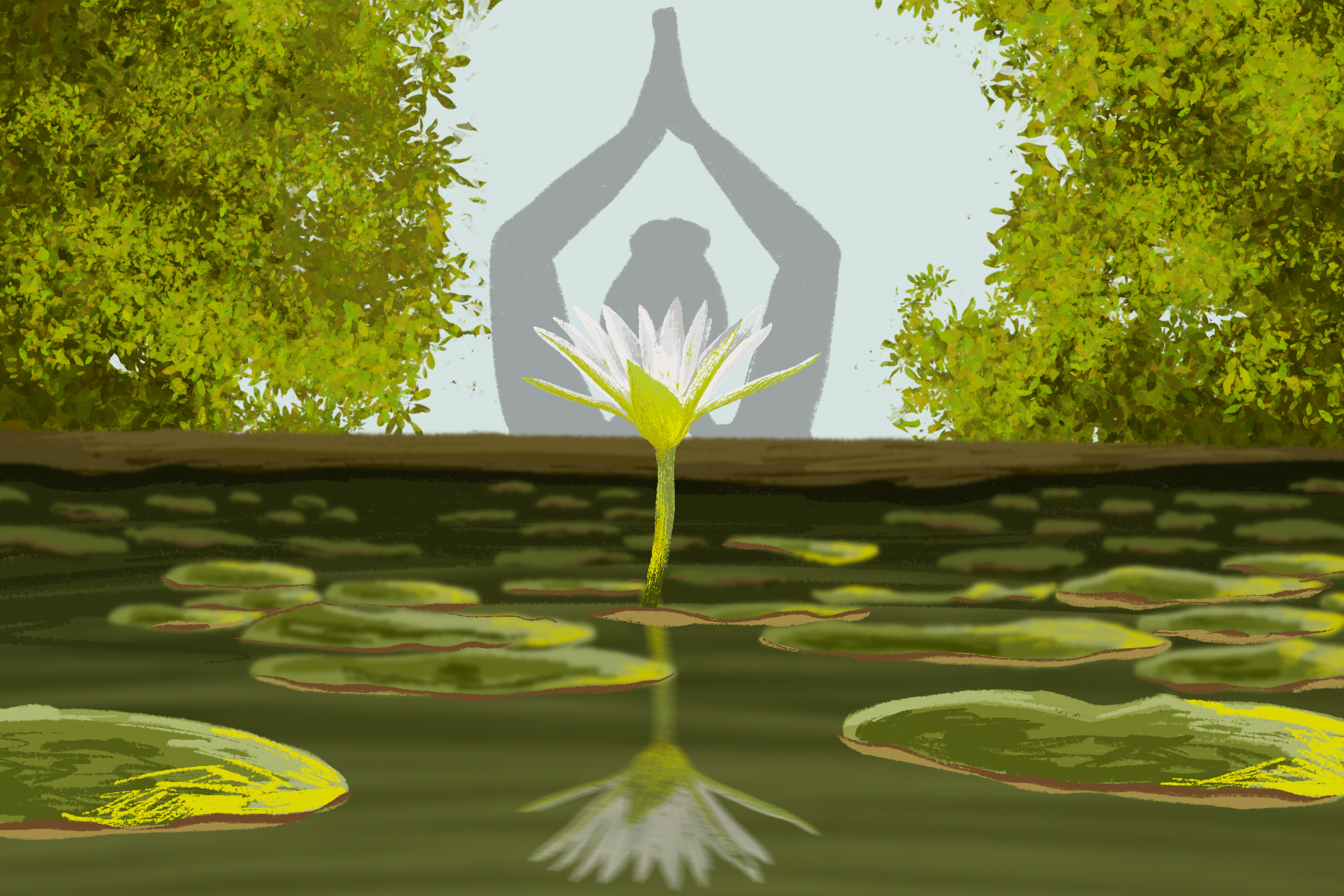When COVID-19 began to shatter the world around me, I turned to the outdoors. Nature became my saving grace throughout quarantine and into social distancing. I found myself spending more time in my backyard and waking up early to hike when I knew the trails would be empty. Time spent drinking up the fresh air under a canopy of green never failed to clear my head. Without knowing it, I was putting the principles of ecotherapy into practice.
What is ecotherapy?
Of course, the idea that nature is relaxing or peaceful is not new. Walks by the ocean or even listening to bird sounds are common stress-relieving activities for many people. But, ecotherapy uses the science behind these acts to add a level of purpose to the use of nature in maintaining mental health.
Many studies have found that nature has a physical effect on the human body that improves mental well-being. For example, participants of a 2015 Stanford study who walked for 90 minutes in nature experienced less activity in the area of the brain linked to depression and anxiety than participants who walked in a non-natural environment.
This knowledge has led to a new growing field of study called ecopsychology, the science that is the backbone of ecotherapy. Ecopsychology recognizes the many psychological benefits of time spent in nature, including its ability to “lower blood pressure and stress hormone levels, reduce nervous system arousal, enhance immune system function, increase self-esteem, reduce anxiety, and improve mood,” as written in a Yale article.
Ecotherapy puts ecopsychology into practice. As the name suggests, it uses nature as a form of therapeutic treatment. Many colleges, including the University of Washington, the University of Michigan and the University of Arizona, have ecotherapy and ecopsychology programs. These programs train people to become ecotherapists. Yes, this job title truly exists.
What can you do?
Even though ecopsychology and ecotherapy are gaining exposure and popularity, most people do not have a degree in the subject or their own therapist who specializes in it. This does not mean ecotherapy in some form or another is off the table. Nature and its therapeutic abilities are free — you just have to know how to use them.
At the very least, to partake in your own form of ecotherapy, you need to spend time in some form of nature. A study from the University of Exeter suggests that at least 120 minutes per week in nature is required to reap the benefits. If this amount seems unreasonable, start small and try to work up to it.
Maybe you like to spend your time outdoors getting physical, whether it be through walking, biking or playing a sport. If this sounds like a chore, you can sit and relax, journal, read or maybe even meditate. Choose an activity that keeps you off of technology.
It is important to note that choosing an activity may be helpful to get you interacting with nature, but that is only the first step. Many principles of ecotherapy suggest that not only must you spend time in nature, but you should also engage with mindfulness. This concept is perfectly embodied by the act of forest bathing.
Forest Bathing
The Japanese practice of shinrin-yoku, or forest bathing in English, places full focus on nature and not the activities completed within nature. Simply put, to forest bathe, you have to go to nature and simply be. There is no specific act. Instead, forest bathers try to experience the nature around them fully through all five senses. A Time article explains it as a bridge: “By opening our senses, it bridges the gap between us and the natural world.”
The key to forest bathing is the lack of a specific goal. You can walk around the forest, feel the grass or water, listen to the birds sing. But do not have a location in mind that you are traveling to. Do not have a fitness goal. Do not try to document the moment for social media. Instead, interact with whatever part of the environment is calling to you. Find what feels good to you and try to connect to the experience through each sense as much as you can. “Drink in the flavor of the forest and release your sense of joy and calm,” Qing Li of Time explains. “This is your sixth sense, a state of mind.”
Forest bathing ultimately uses mindfulness techniques to disconnect people from the stressors of life and instead connects them to the serenity of nature.
Other Ideas to Connect With Nature
Perhaps this sounds a little hippy-dippy to you. Maybe you tried forest bathing and found yourself unsure of what to do. Or maybe you do not have access to the forest or wild spaces. I recently returned to college in a city and can no longer take morning hikes or spend time in my yard. Whatever it is, there are many ecotherapy-adjacent activities that are more straightforward than forest bathing and do not require forests. You can use the principles of ecopsychology to create your own ecotherapy routine.
A park, however small, or a garden will suffice as a natural space. They are perfect for sitting, thinking and meditating. You can also adapt forest bathing to fit into smaller spaces such as these. Just remember to focus on your senses to connect with whatever natural space you have.
You can also get creative with the way you interact with nature. Gardening, perhaps at a community garden, or getting a house plant are other ways to connect with the environment. The act of gardening quite literally connects you to nature through making you the caretaker for an offshoot of it. One of NPR’s Life Kit podcast episodes that focuses on caring for houseplants suggests naming your houseplants to strengthen your sense of responsibility and connection to them.
If caring for plants isn’t your forte, try a flower pot tour, as suggested by National Geographic. Take a walk around your neighborhood and take time to view the plants being grown, appreciating the variety you discover.
https://www.instagram.com/p/CC8-FnsjL5J/
Many of these suggestions focus on experiencing nature as is, which may not come easily at first and instead might seem boring. If this is the case, start with activities that still relate to nature but involve more action. Harness the whimsy and excitement children get from the outdoors and learn about the wildlife near or far from you. Make art with nature, such as painting rocks. Or perhaps you can partake in some form of conservation, like picking up litter.
All these activities will initiate contact between you and nature. Maybe they will ease you into activities such as forest bathing. If not, you are still slowing down and taking time for yourself, a therapeutic act in itself.
Ecotherapy has become an essential part of my life and my well-being. Perhaps you, too, will find your peace of mind or stress relief under the leaves, in the gurgle of a river, or from a garden’s earthy scent.

















